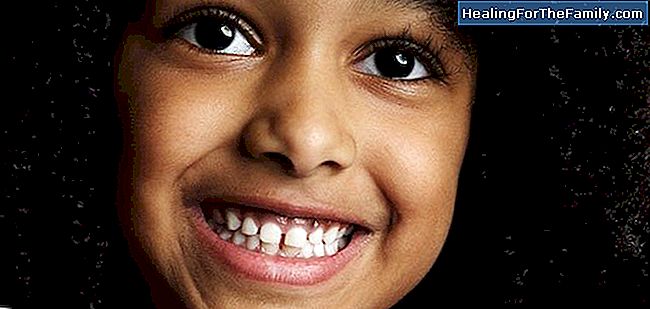Separate teeth in children
Many parents are concerned when they see that their child is having separated milk teeth, and they are worried that this means that the definitive ones will also be separated, or that they require some type of treatment. Milk teeth are very small compared to the final teeth. The bone they are in is
Many parents are concerned when they see that their child is having separated milk teeth, and they are worried that this means that the definitive ones will also be separated, or that they require some type of treatment.
Milk teeth are very small compared to the final teeth. The bone they are in is also very small and the only way you can fit them all is for them to be narrow compared to their substitutes. And in addition to small, there must be space between them. The definitive teeth need the space occupied by the milk teeth plus the interdental space.
Complications generated in children due to having little separated teeth

That the upper central incisors (the 'blades') are separated does not necessarily have to do with the labial frenum. This separation is usually closed with the eruption of the definitive canines, at puberty, with which there is plenty of time not to worry.
However, the that all the teeth are together in the temporary dentition can cause several types of complications:
1. Interdental caries:The fact that the teeth are separated is a 'safe anticaries'; saliva passes through that space and it is difficult for food remains to be packaged and give rise to cavities. However, when the teeth are together it is common to find traces of food between them. And we do not usually realize that in these cases the use of dental floss is essential, as in adults. Flossing children is very easy if we do it with applicators, which are small accessories in the shape of a Y with a piece of thread between the ears of the Y. In children 3 years and older, the most frequent caries are interdental between the lower molars, and this is the best measure to prevent them, along with a proper brushing and a low consumption of sugars.
2. Malpositions in the final dentition:when the milk teeth are together, where will the definitive teeth be placed? They will not have a place, because they take up much more space. So they have no choice but to leave misaligned, crowded. Unless the bone is stimulated to stimulate its growth, this crowding in adulthood in turn increases the risk of interdental caries and gum problems, as well as if there are bad positions in a group of teeth, in the arch. opposite there will also be to adapt to the arcade with crowding.
The best way to prevent these problems, and to encourage these spaces, is to maintain breastfeeding for at least two years, and introduce solid foods coinciding with the eruption of the first molar milk. When the mouth is used for what it is, to chew, the structure of the bone and the disposition of the teeth is going to be the most likely one.












